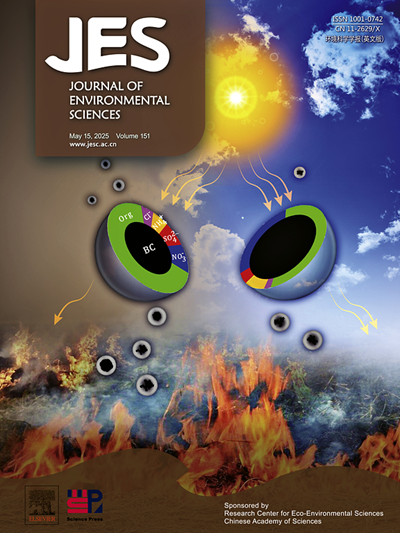Effects of PAHs on nitrogen uptake by phytoplankton species: Implications for environmental risk assessment of micropollutants and algal bloom formation
IF 5.9
2区 环境科学与生态学
Q1 ENVIRONMENTAL SCIENCES
引用次数: 0
Abstract
Polycyclic aromatic hydrocarbons (PAHs) are of great concern because they threaten primary productivity, but their specific effects on ecosystem functioning are scarce, hindering a comprehensive understanding of their ecological risks, especially in eutrophic waters. The present study was conducted by adding PAHs to four marine phytoplankton species and showed that naphthalene (Nap) and phenanthrene (Phe) induced both stimulatory and inhibitory effects (>50 %) on urea and NO3− uptake by phytoplankton species. In addition, the apparent stimulative effects (>50 %) for NH4+ were also observed. Overall, 38.9 % of the samples exhibited stimulation effects after 24 h exposure, which increased to 61.1 % after 96 h exposure. This suggested the existence of a lag period, during which a tolerant cell population could adapt to PAHs. Significant positive correlations (P < 0.01) between low and high concentrations of PAH individuals demonstrated that the mode of action for both pollutants on nitrogen uptake by phytoplankton was the same. Species-specific responses were also observed, with 19.0 % of Thalassiosira sp. and 24.0 % of Tetraselmis sp. exhibited inhibition effects greater than 50 %, while 40.9 % of Karlodinium veneficum (K. veneficum) and 27.3 % of Rhodomonas salina (R. salina) demonstrated stimulation effects exceeding 50 %, providing a unique perspective for exploring the harmful algal bloom of the mixotrophic K. veneficum, in addition to the original consideration of nutrients. The internal mechanisms may lie in differences in energy consumption between N-forms, exposure time and chemical concentrations, as well as morphological characteristics and biochemical structures of the species, which require further investigation.

求助全文
约1分钟内获得全文
求助全文
来源期刊

Journal of Environmental Sciences-china
环境科学-环境科学
CiteScore
13.70
自引率
0.00%
发文量
6354
审稿时长
2.6 months
期刊介绍:
The Journal of Environmental Sciences is an international journal started in 1989. The journal is devoted to publish original, peer-reviewed research papers on main aspects of environmental sciences, such as environmental chemistry, environmental biology, ecology, geosciences and environmental physics. Appropriate subjects include basic and applied research on atmospheric, terrestrial and aquatic environments, pollution control and abatement technology, conservation of natural resources, environmental health and toxicology. Announcements of international environmental science meetings and other recent information are also included.
 求助内容:
求助内容: 应助结果提醒方式:
应助结果提醒方式:


